January 2019 Climate Summaries
Mobile Alabama and Pensacola Florida Area
National Weather Service Mobile Alabama
February 4, 2019
January 2019 in Review - Monthly temperatures started off well above seasonal normal then settled closer to seasonal at the close of the month. Average temperatures generally 1 to 2 degrees above normal on average. No record temperatures were set. As far as rainfall, dry conditions start off the new year with deficits between 1 and 2 inches at both Mobile and Pensacola.
Mobile Alabama Area - The average monthly high was 62.2° or 1.4° above normal. The average monthly low was 40.9° or 0.9° above normal. The average monthly temperature was 51.6° or 1.2° above normal.(Fig. A) shows how the Mobile area temperatures compared to the seasonal normal monthly highs and lows, which are shown by the colored dashed lines. January rainfall measured 4.27" or 1.38" below normal (Fig. B). Accumulated precipitation is also provided below, which shows the all time max (year of occurrence), min (year of occurrence) and average precipitation ending for the month.
Click on the Mobile Alabama area climate graphics below to expand:
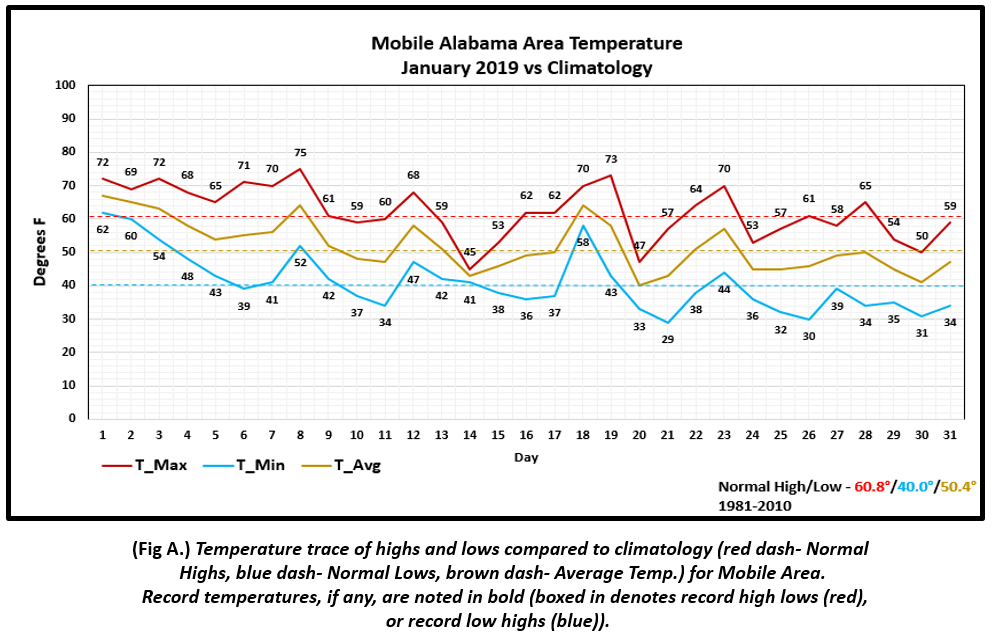
|
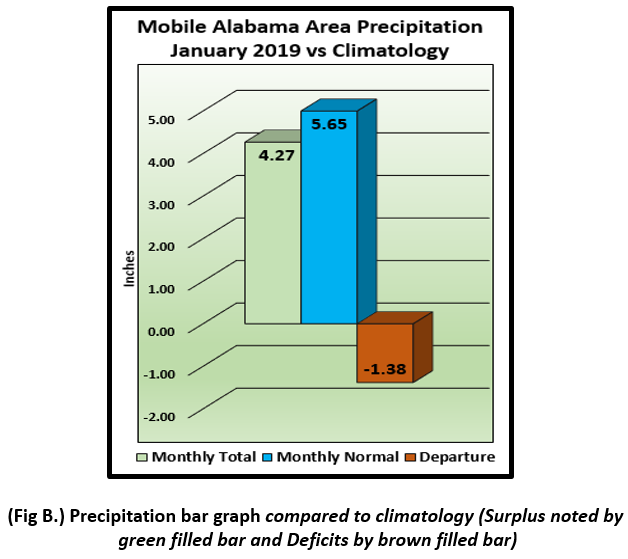
|
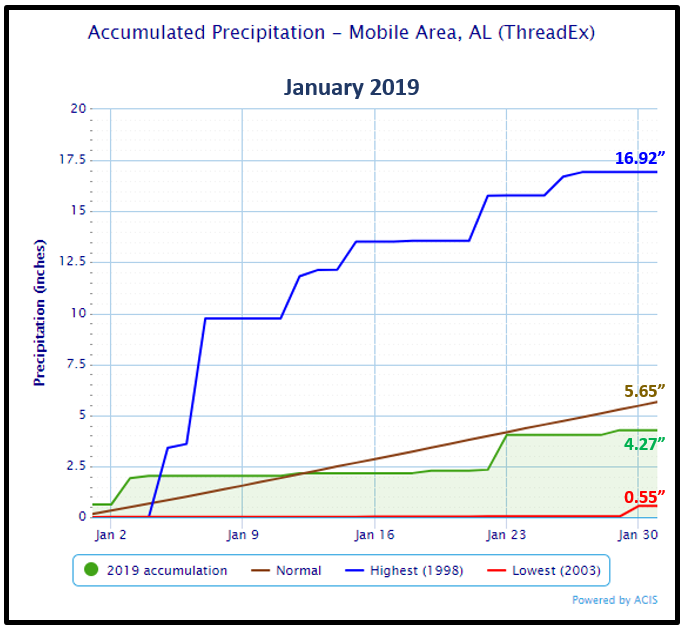
Against Climatology |
Pensacola Florida Area - The average monthly high was 62.8° or 2.3° above normal. The average monthly low was 44.2° or 2.0° above normal. The average monthly temperature was 53.5° or 2.1° above normal. (Fig. C) shows how the Pensacola area temperatures compared to the seasonal normal monthly highs and lows, which are shown by the colored dashed lines. January rainfall measured 2.84" or 1.79" below normal (Fig. D). Accumulated precipitation is also provided below, which shows the all time max (year of occurrence), min (year of occurrence) and average precipitation ending for the month.
Click on the Pensacola Florida area climate graphics below to expand:
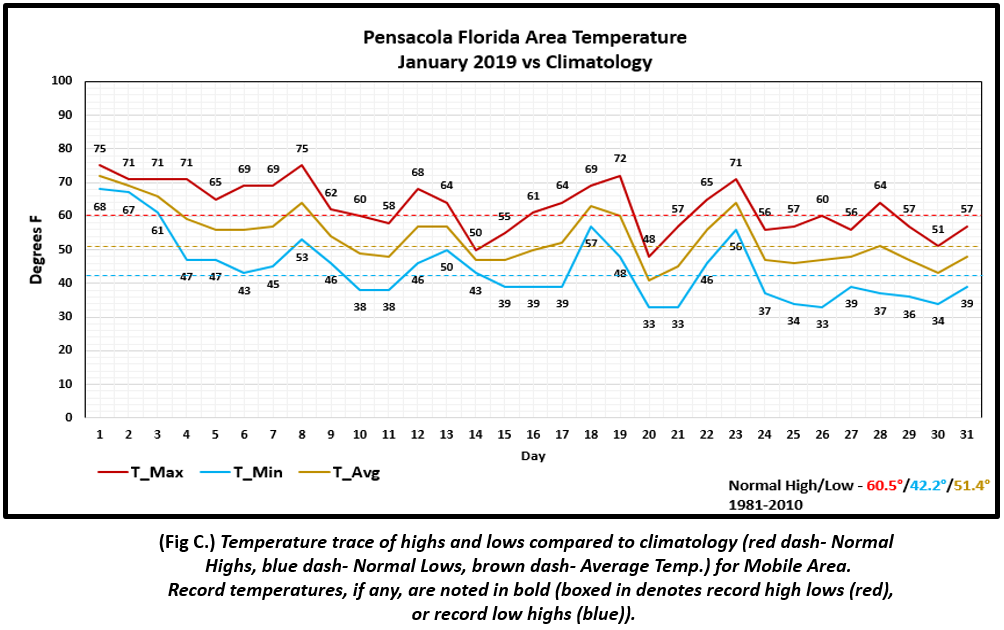
|
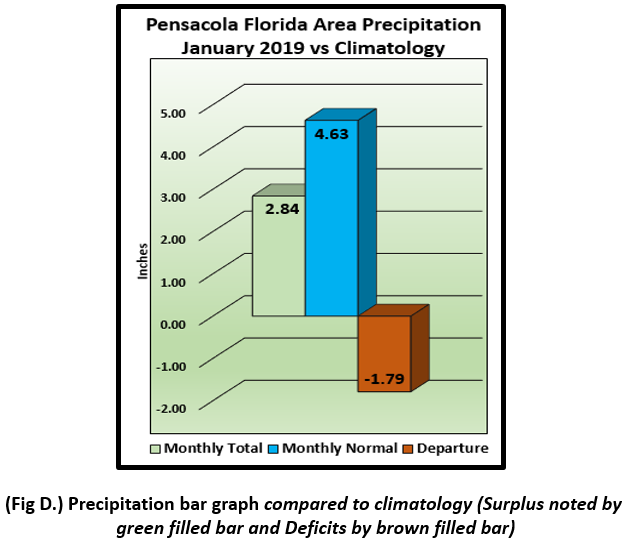
|
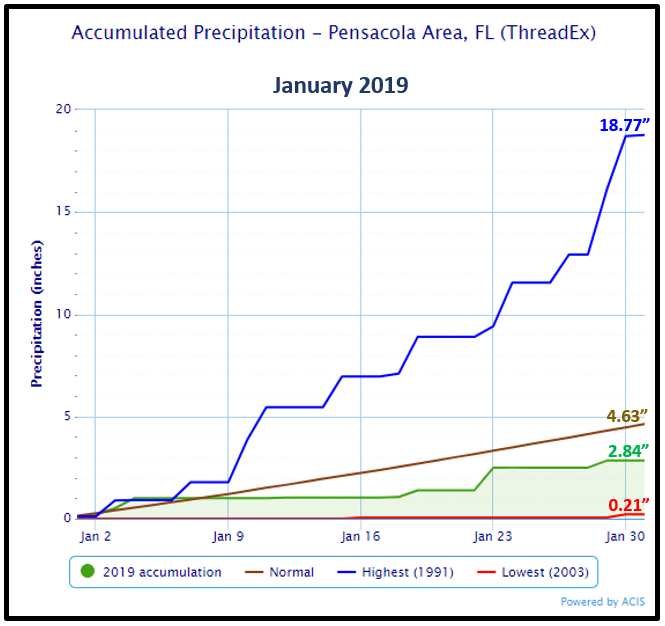
Against Climatology |
February Climatology and Outlooks:
There are indications that a northeast storm track from eastern Texas to the Tennessee River Valley may result in instances of excessive rainfall going into the middle of the month of February. This may result in elevated river stages over the Tombigbee and Alabama River waterways along the coastal plain. Although an unseasonably warm February is favored, any early spring-time gardening efforts can be negatively impacted by cold as the average last freeze dates are still a month or two away for much of the region.
Click on the snap shots below to expand:
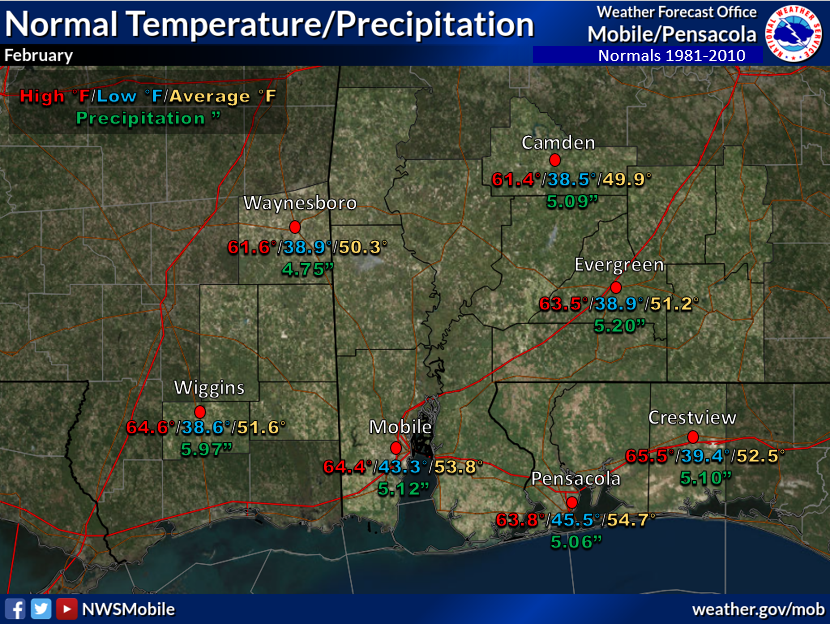
|
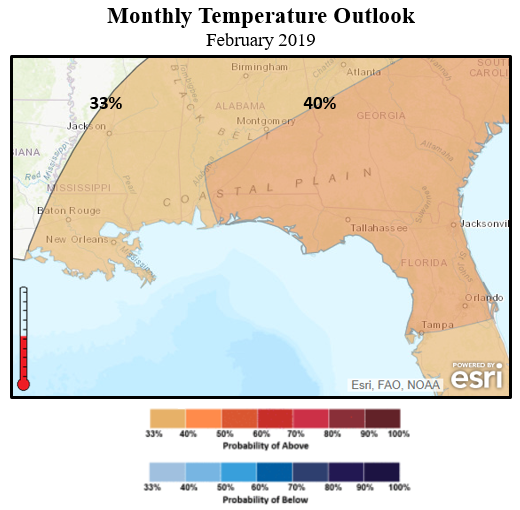
Outlook |
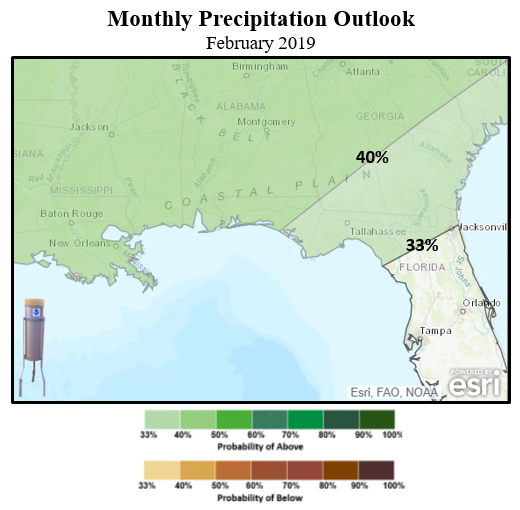
Outlook |
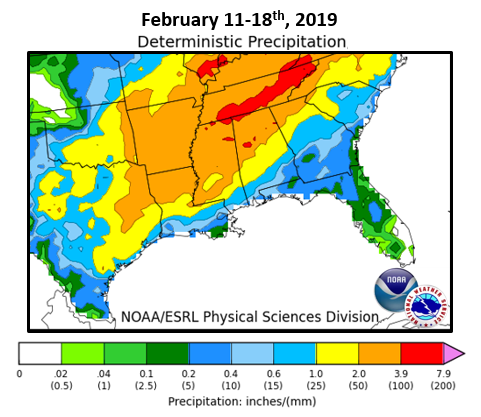
|
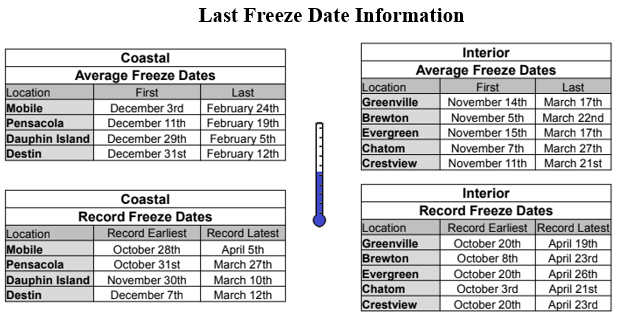
|
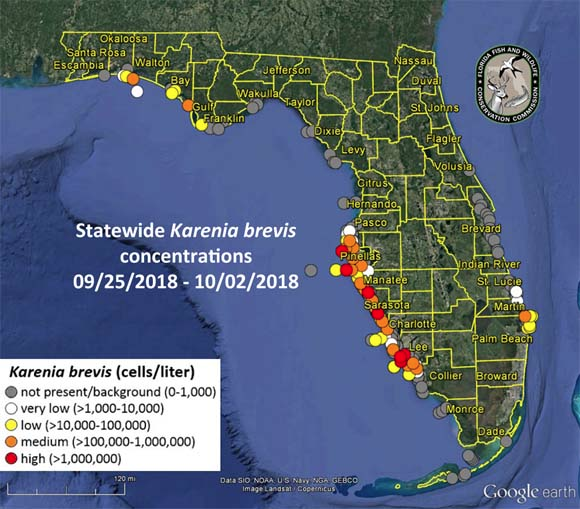
Information |
Climate Prediction Center's Interactive Long Range Outlooks
Additional Climate Links:
The links below are intended to provide additional climate information, education and outlooks. The National Weather Service Mobile Alabama's Climate and Past Weather page provides climate data at your fingertips for many observation points in the local forecast area by accessing the NOWData tab as well as many other climate resources. The Climate Prediction Center Link provides short and longer range climatic outlooks and education about the larger scale global circulations that impact temperatures and weather. With the large agriculture and farming presence along the central Gulf coast, the Drought Monitor link provides updates on drought trends and impacts. Another very helpful resource is the Community Collaborative Rain Hail and Snow (CoCoRaHS) network, which is a large group of volunteers working together to measure and map precipitation (rain, hail and snow). The aim of CoCoRaHS is to provide the highest quality data for natural resource, education and research applications. You can be a part of the CoCoRaHS team by becoming a volunteer rainfall observer. To learn more click on the CoCoRaHS link below.
National Weather Service Mobile AL Climate and Past Weather
Climate Prediction Center (CPC)
CoCoRaHS Network Water Year Summaries
